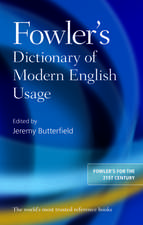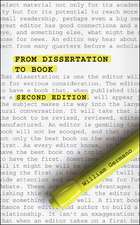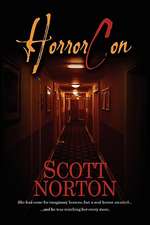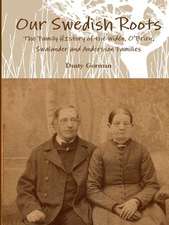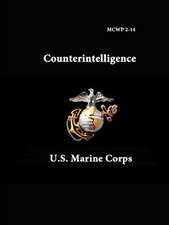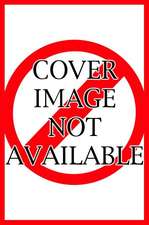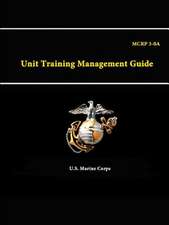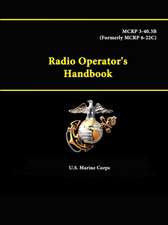Developmental Editing: A Handbook for Freelancers, Authors, and Publishers: Chicago Guides to Writing, Editing, and Publishing
Autor Scott Nortonen Limba Engleză Paperback – 30 noi 2011
Editing is a tricky business. It requires analytical flair and creative panache, the patience of a saint and the vision of a writer. Transforming a manuscript into a book that edifies, inspires, and sells? That’s the job of the developmental editor, whose desk is the first stop for many manuscripts on the road to bookdom—a route ably mapped out in the pages of Developmental Editing.
Author Scott Norton has worked with a diverse range of authors, editors, and publishers, and his handbook provides an approach to developmental editing that is logical, collaborative, humorous, and realistic. He starts with the core tasks of shaping the proposal, finding the hook, and building the narrative or argument, and then turns to the hard work of executing the plan and establishing a style.
Developmental Editing includes detailed case studies featuring a variety of nonfiction books—election-year polemic, popular science, memoir, travel guide—and authors ranging from first-timer to veteran, journalist to scholar. Handy sidebars offer advice on how to become a developmental editor, create effective illustration programs, and adapt sophisticated fiction techniques (such as point of view, suspense, plotting, character, and setting) to nonfiction writing.
Norton’s book also provides freelance copyeditors with a way to earn higher fees while introducing more creativity into their work lives. It gives acquisitions, marketing, and production staff a vocabulary for diagnosing a manuscript’s flaws and techniques for transforming it into a bestseller. And perhaps most importantly, Developmental Editing equips authors with the concrete tools they need to reach their audiences.
Author Scott Norton has worked with a diverse range of authors, editors, and publishers, and his handbook provides an approach to developmental editing that is logical, collaborative, humorous, and realistic. He starts with the core tasks of shaping the proposal, finding the hook, and building the narrative or argument, and then turns to the hard work of executing the plan and establishing a style.
Developmental Editing includes detailed case studies featuring a variety of nonfiction books—election-year polemic, popular science, memoir, travel guide—and authors ranging from first-timer to veteran, journalist to scholar. Handy sidebars offer advice on how to become a developmental editor, create effective illustration programs, and adapt sophisticated fiction techniques (such as point of view, suspense, plotting, character, and setting) to nonfiction writing.
Norton’s book also provides freelance copyeditors with a way to earn higher fees while introducing more creativity into their work lives. It gives acquisitions, marketing, and production staff a vocabulary for diagnosing a manuscript’s flaws and techniques for transforming it into a bestseller. And perhaps most importantly, Developmental Editing equips authors with the concrete tools they need to reach their audiences.
Din seria Chicago Guides to Writing, Editing, and Publishing
-
 Preț: 97.74 lei
Preț: 97.74 lei -
 Preț: 192.95 lei
Preț: 192.95 lei -
 Preț: 151.16 lei
Preț: 151.16 lei -
 Preț: 134.26 lei
Preț: 134.26 lei -
 Preț: 139.84 lei
Preț: 139.84 lei -
 Preț: 96.52 lei
Preț: 96.52 lei -
 Preț: 106.52 lei
Preț: 106.52 lei -
 Preț: 210.01 lei
Preț: 210.01 lei -
 Preț: 194.53 lei
Preț: 194.53 lei -
 Preț: 99.60 lei
Preț: 99.60 lei -
 Preț: 162.48 lei
Preț: 162.48 lei -
 Preț: 147.26 lei
Preț: 147.26 lei -
 Preț: 124.16 lei
Preț: 124.16 lei -
 Preț: 122.50 lei
Preț: 122.50 lei -
 Preț: 108.27 lei
Preț: 108.27 lei -
 Preț: 145.32 lei
Preț: 145.32 lei -
 Preț: 133.32 lei
Preț: 133.32 lei -
 Preț: 132.51 lei
Preț: 132.51 lei -
 Preț: 149.63 lei
Preț: 149.63 lei -
 Preț: 103.49 lei
Preț: 103.49 lei -
 Preț: 100.41 lei
Preț: 100.41 lei -
 Preț: 99.83 lei
Preț: 99.83 lei -
 Preț: 305.98 lei
Preț: 305.98 lei -
 Preț: 147.49 lei
Preț: 147.49 lei -
 Preț: 407.91 lei
Preț: 407.91 lei -
 Preț: 107.54 lei
Preț: 107.54 lei -
 Preț: 120.87 lei
Preț: 120.87 lei -
 Preț: 157.15 lei
Preț: 157.15 lei -
 Preț: 114.49 lei
Preț: 114.49 lei -
 Preț: 139.22 lei
Preț: 139.22 lei -
 Preț: 186.13 lei
Preț: 186.13 lei -
 Preț: 172.17 lei
Preț: 172.17 lei -
 Preț: 433.53 lei
Preț: 433.53 lei -
 Preț: 115.68 lei
Preț: 115.68 lei -
 Preț: 147.40 lei
Preț: 147.40 lei -
 Preț: 158.19 lei
Preț: 158.19 lei -
 Preț: 91.96 lei
Preț: 91.96 lei - 23%
 Preț: 576.92 lei
Preț: 576.92 lei -
 Preț: 187.79 lei
Preț: 187.79 lei -
 Preț: 235.83 lei
Preț: 235.83 lei -
 Preț: 237.81 lei
Preț: 237.81 lei -
 Preț: 148.29 lei
Preț: 148.29 lei -
 Preț: 143.00 lei
Preț: 143.00 lei -
 Preț: 172.90 lei
Preț: 172.90 lei
Preț: 236.78 lei
Nou
Puncte Express: 355
Preț estimativ în valută:
45.31€ • 49.20$ • 38.06£
45.31€ • 49.20$ • 38.06£
Carte tipărită la comandă
Livrare economică 22 aprilie-06 mai
Preluare comenzi: 021 569.72.76
Specificații
ISBN-13: 9780226595153
ISBN-10: 0226595153
Pagini: 256
Ilustrații: 4 tables
Dimensiuni: 152 x 229 x 18 mm
Greutate: 0.36 kg
Editura: University of Chicago Press
Colecția University of Chicago Press
Seria Chicago Guides to Writing, Editing, and Publishing
ISBN-10: 0226595153
Pagini: 256
Ilustrații: 4 tables
Dimensiuni: 152 x 229 x 18 mm
Greutate: 0.36 kg
Editura: University of Chicago Press
Colecția University of Chicago Press
Seria Chicago Guides to Writing, Editing, and Publishing
Notă biografică
Scott Norton is director of editing, design, and production at the University of California Press.
Cuprins
Preface
Introduction
Introduction
What Developmental Editing Is
Whom This Book Is For
What This Book Covers
Some Ground Rules
1 Concept: Shaping the Proposal
Author Profile: The Veteran
Client Profile: The Agent
Assignment: The Proposal with Too Many Concepts
Locate the Concept
Profile the Audience
Evaluate Market Potential
Bring the Vision into Focus
2 Content: Assessing Potential
Author Profile: The First-timer
Client Profile: The Big Trade House
Assignment: The Tome with Too Many Subjects
Size Up the Author
Size Up the Publisher
Size Up the DE
Create a Content Summary
Find the Main Subject
3 Thesis: Finding the Hook
Author Profile: The Coauthors
Client Profile: The Small Trade House
Assignment: The Study with Too Many Theses
Cull Theses from Topics
Beware of the Rehash
Choose the Main Thesis
Create a Working Title
4 Narrative: Tailoring the Timeline
Author Profile: The Historian
Client Profile: The Copublisher
Assignment: The Sprawling Saga
Untangle Timelines from Arguments
Find the Main Timelines
Brainstorm Timeline Strategies
Compose the New Timeline
Finetune the Timeline
Restore Bits of Argument
5 Exposition: Deploying the Argument
Author Profile: The Theorist
Client Profile: The University Press
Assignment: The Theory with Too Many Tangents
Untangle Arguments from Timelines
Find the Main Arguments
Brainstorm Argument Strategies
Compose the New Argument
Finetune the Argument
Restore Bits of Timeline
6 Plan: Drafting a Blueprint
Write Up the Plan
Compose Chapter Theses
Intervene Strategically
7 Rhythm: Setting the Pace
Author Profile: The Sole Authority
Client Profile: The Regional House
Assignment: The Local History Turned Personal
Rearrange the Furniture
Draft New Passages
Balance Chapter Weights
Edit for Pace
8 Transitions: Filling in the Blanks
Author Profile: The Dead Author
Client Profile: The Self-Publisher
Assignment: The Memoir with Lapses
Create Opening Transitions
Create Closing Transitions
Draw Conclusions
Place Those Conclusions
9 Style: Training the Voice
Author Profile: The Journalist
Client Profile: The Book Packager
Assignment: The Story with Too Many Voices
Set the Tone
Parse the Rhetoric
Master Abstraction
Gauge the Ironies
Harmonize the Voices
10 Display: Dressing Up the Text
Author Profile: The Author-for-Hire
Client Profile: The Trade Reference House
Assignment: The Guidebook with Poor Signage
Consider Subheads
Consider Epigraphs
Draft an Art Plan
Illustrate Concepts
Visualize Data
Test-Drive Maps
Add Lagniappe
Afterword
Further Reading
Acknowledgments
Index
Whom This Book Is For
What This Book Covers
Some Ground Rules
1 Concept: Shaping the Proposal
Author Profile: The Veteran
Client Profile: The Agent
Assignment: The Proposal with Too Many Concepts
Locate the Concept
Profile the Audience
Evaluate Market Potential
Bring the Vision into Focus
2 Content: Assessing Potential
Author Profile: The First-timer
Client Profile: The Big Trade House
Assignment: The Tome with Too Many Subjects
Size Up the Author
Size Up the Publisher
Size Up the DE
Create a Content Summary
Find the Main Subject
3 Thesis: Finding the Hook
Author Profile: The Coauthors
Client Profile: The Small Trade House
Assignment: The Study with Too Many Theses
Cull Theses from Topics
Beware of the Rehash
Choose the Main Thesis
Create a Working Title
4 Narrative: Tailoring the Timeline
Author Profile: The Historian
Client Profile: The Copublisher
Assignment: The Sprawling Saga
Untangle Timelines from Arguments
Find the Main Timelines
Brainstorm Timeline Strategies
Compose the New Timeline
Finetune the Timeline
Restore Bits of Argument
5 Exposition: Deploying the Argument
Author Profile: The Theorist
Client Profile: The University Press
Assignment: The Theory with Too Many Tangents
Untangle Arguments from Timelines
Find the Main Arguments
Brainstorm Argument Strategies
Compose the New Argument
Finetune the Argument
Restore Bits of Timeline
6 Plan: Drafting a Blueprint
Write Up the Plan
Compose Chapter Theses
Intervene Strategically
7 Rhythm: Setting the Pace
Author Profile: The Sole Authority
Client Profile: The Regional House
Assignment: The Local History Turned Personal
Rearrange the Furniture
Draft New Passages
Balance Chapter Weights
Edit for Pace
8 Transitions: Filling in the Blanks
Author Profile: The Dead Author
Client Profile: The Self-Publisher
Assignment: The Memoir with Lapses
Create Opening Transitions
Create Closing Transitions
Draw Conclusions
Place Those Conclusions
9 Style: Training the Voice
Author Profile: The Journalist
Client Profile: The Book Packager
Assignment: The Story with Too Many Voices
Set the Tone
Parse the Rhetoric
Master Abstraction
Gauge the Ironies
Harmonize the Voices
10 Display: Dressing Up the Text
Author Profile: The Author-for-Hire
Client Profile: The Trade Reference House
Assignment: The Guidebook with Poor Signage
Consider Subheads
Consider Epigraphs
Draft an Art Plan
Illustrate Concepts
Visualize Data
Test-Drive Maps
Add Lagniappe
Afterword
Further Reading
Acknowledgments
Index

